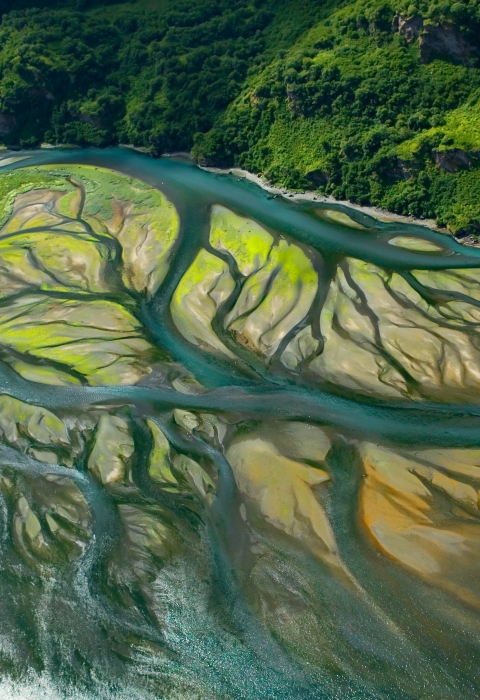Wetlands Metadata
Metadata or "data about data" describes the content, quality, condition, and other characteristics of data. Metadata are used to organize and maintain investments in data, to provide information to data catalogs and clearinghouses, and to aid data transfers. The Federal Geographic Data Committee approved the Content Standard for Digital Geospatial Metadata on June 8, 1994. Since that time, many organizations within and outside of the Federal Government have adopted the FGDC metadata standard and are using automated indexing and serving mechanisms to provide access to their holdings through the Internet.
The National Wetlands Inventory data has a quilt work of information about the data due to the complexity and geographic variation of wetlands, the decades of data collection and the size of the geographic coverage. ‘Metadata’ for the wetlands dataset is currently captured at three levels. Those levels are described below and the standard FGDC metadata for all layers served on the Wetlands Mapper can be found in the list at the bottom of this page.
Federal Geographic Data Committee Metadata
The U.S. Federal Geographic Data Committee (FGDC) describes (geospatial) metadata as follows:
"A metadata record is a file of information, usually presented as an XML document, which captures the basic characteristics of a data or information resource. It represents the who, what, when, where, why and how of the resource. A geospatial metadata record includes core library catalog elements such as Title, Abstract, and Publication Data; geographic elements such as Geographic Extent and Projection Information; and database elements such as Attribute Label Definitions and Attribute Domain Values."
Project Level Metadata
Wetland mapping is conducted in defined geographic areas called projects. Imagery is used as the base information to define the type and location of each wetland. The scale, type and date of imagery used in a project is provided in a pop-up window when a wetland polygon is selected on the Wetlands Mapper. Investigators that complete a wetland mapping project record information on the source imagery, collateral data, inventory method, data limitations, geographic features, landforms, wetland types and other specifics in a project metadata document.
This project level metadata can be found by selecting a wetland polygon on the Wetlands Mapper and then clicking on the link next to ‘Project Metadata’ in the pop-up window. Note: Not all areas have a Project Metadata document.
Historic Wetlands Map Information Metadata
Information about the wetland types, vegetation, regional and temporal conditions and geographic features are captured in a historic map document. This document is specific to a geographic area and can be accessed by selecting a wetland polygon on the Wetlands Mapper and then clicking on the link next to ‘Historic Map Info’ in the pop-up window. Note: Not all areas have a Historic Wetlands Map Information document.
| Layer | Metadata |
|---|---|
| Wetlands | XML |
| Wetlands Project Metadata | XML |
| Wetlands Historic Map Information | XML |
| Historic Wetlands | XML |
| Historic Wetlands Project Metadata | XML |
| Riparian | XML |
| Riparian Project Metadata | XML |
| Wetland Areas of Interest | XML |
| Watershed Boundary Dataset (WBD) HUC8 modified | XML |
Visit the Wetlands Mapper to view wetlands and wetland information for your area of interest. For more information about metadata, please visit the FGDC Clearinghouse.
